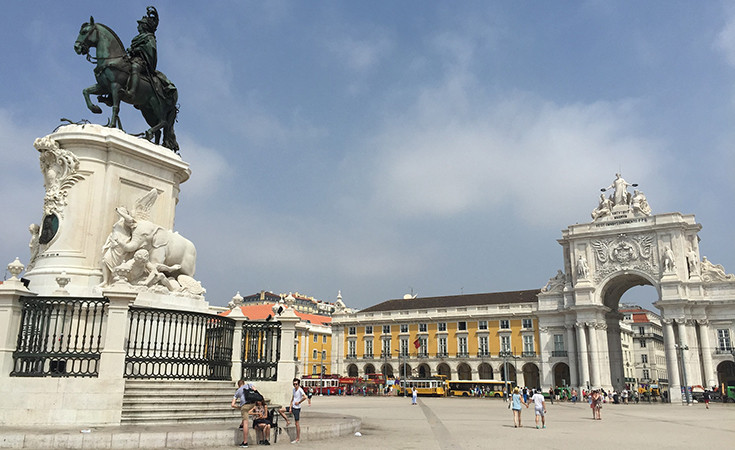
Commerce Square - Praca de Comercio. Squares are parts of the city that depict the energy of the people who live in it, a place to meet and talk. The commerce square is known for its history but also for its beauty; you will often hear that it is one of the most beautiful squares in Europe. It was built on the site of the old Royal Palace, destroyed in an earthquake. It faces the harbor while the southern end of the square is open towards the river Tagus.
Characterized by yellow buildings with arcades along the facade on the other three sides. The square used to play the role of an open door of Lisbon. Everyone came from this side to visit this magnificent city. It was the proximity of the sea and the river that used to make it a place that gathers and receives all visitors who come by sea. Kings and many state representatives left their traces on this square. The square did not always bear this name, before the earthquake of 1755 the square was known as the royal courtyard because the Royal Palace of King Manuel I, better known as the Ribeira Palace, was located on the west side of the square from the 16th century.
The square got a new look after the earthquake, as part of the renovation of the city center. The reconstruction of the city was led by Eugenio dos Santos, who designed a U-shaped square open towards the river. The "U" branches end in two towers that have similarities with the destroyed Ribeira Palace. Some parts were completed in the 19th century, such as the east tower.
The square was created as a desire to symbolize the trade and financial and bourgeois class that contributed so much to the reconstruction of the city after the earthquake. And then the Commerce Square was created, as a symbol of the economy and development of the city.
As it usually happens, all larger and important squares have an equestrian statue, so the statue of Jose I with his horse Gentile is in the middle of the square and faces the river. The oldest Portuguese sculptor, Machada de Castra, was in charge of this masterpiece. The equestrian statue was opened in 1775, the day the king was born. In honors of that, a celebration was held that lasted three days, for all the people of Lisbon with a big public lunch.
